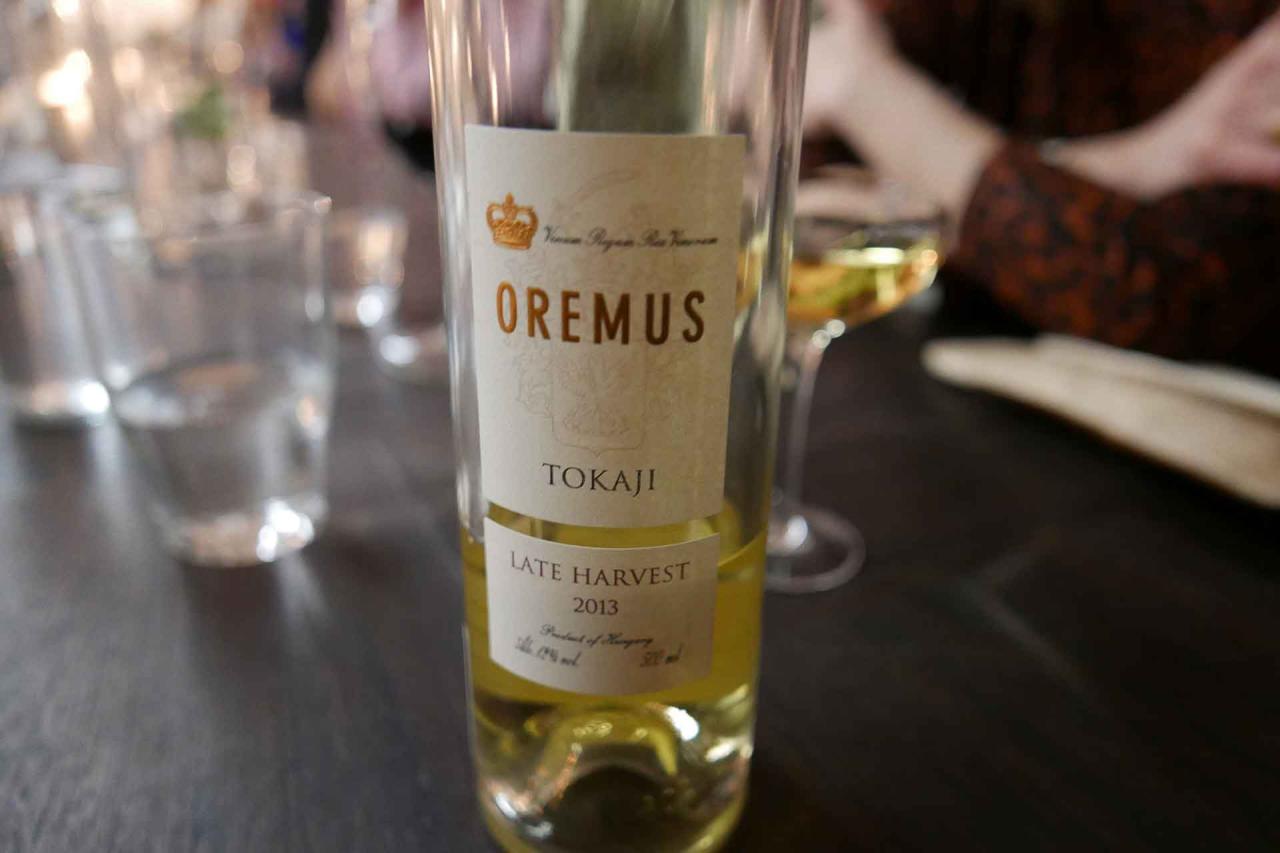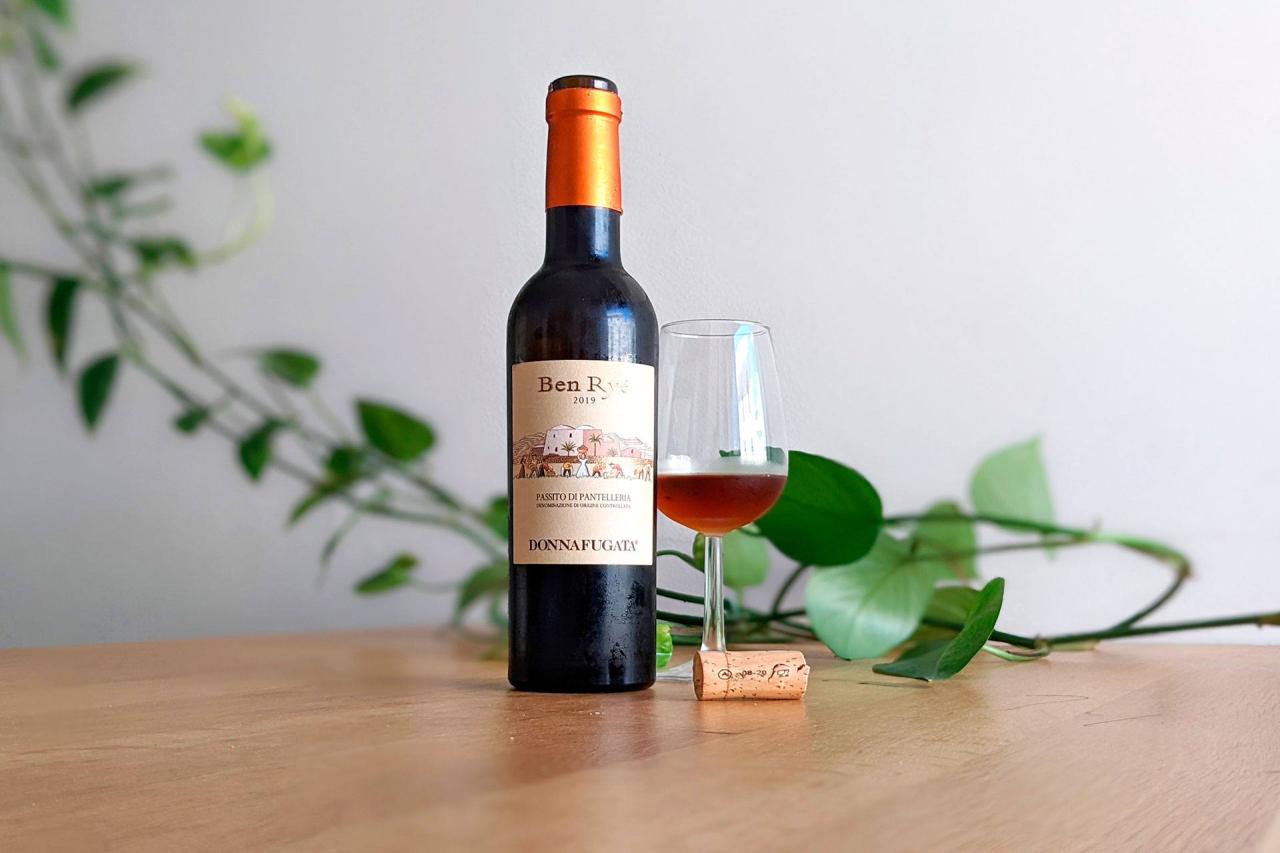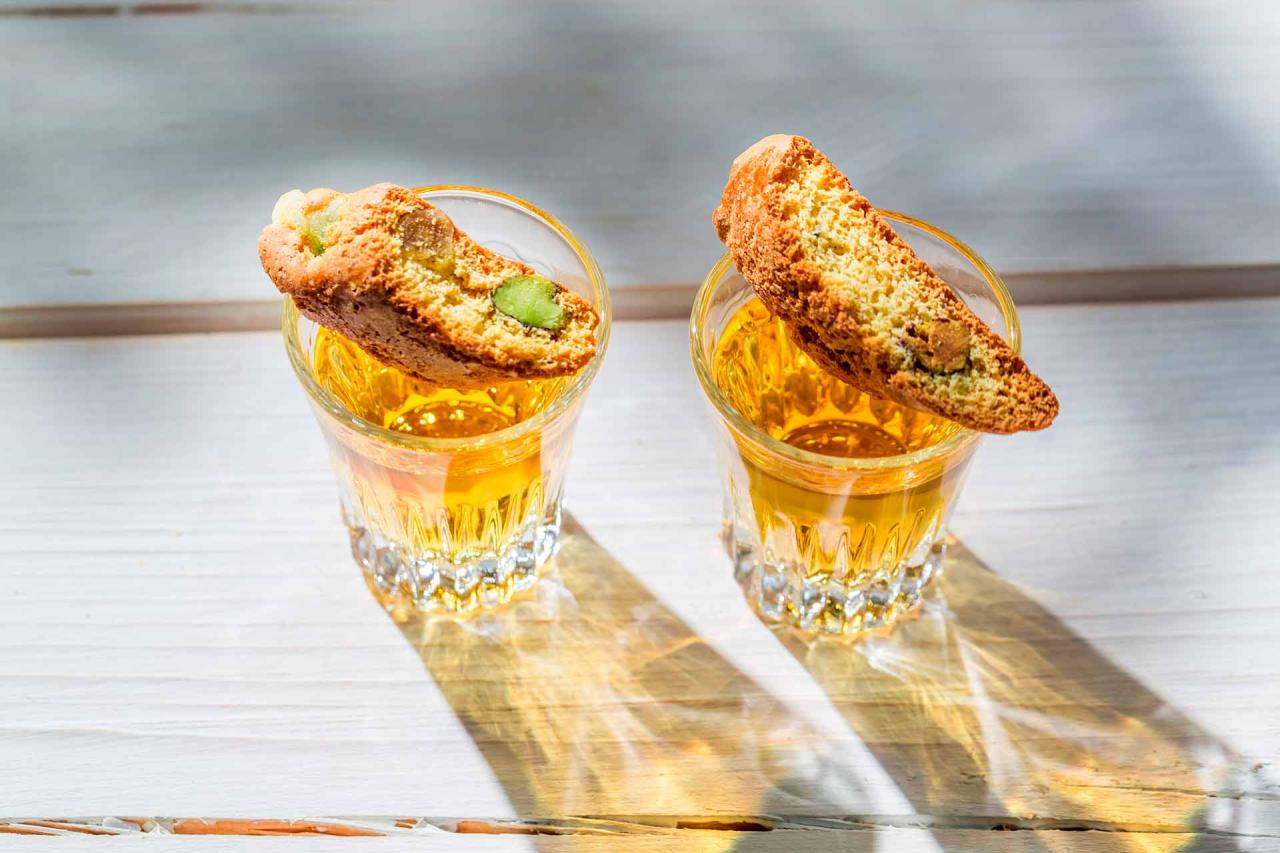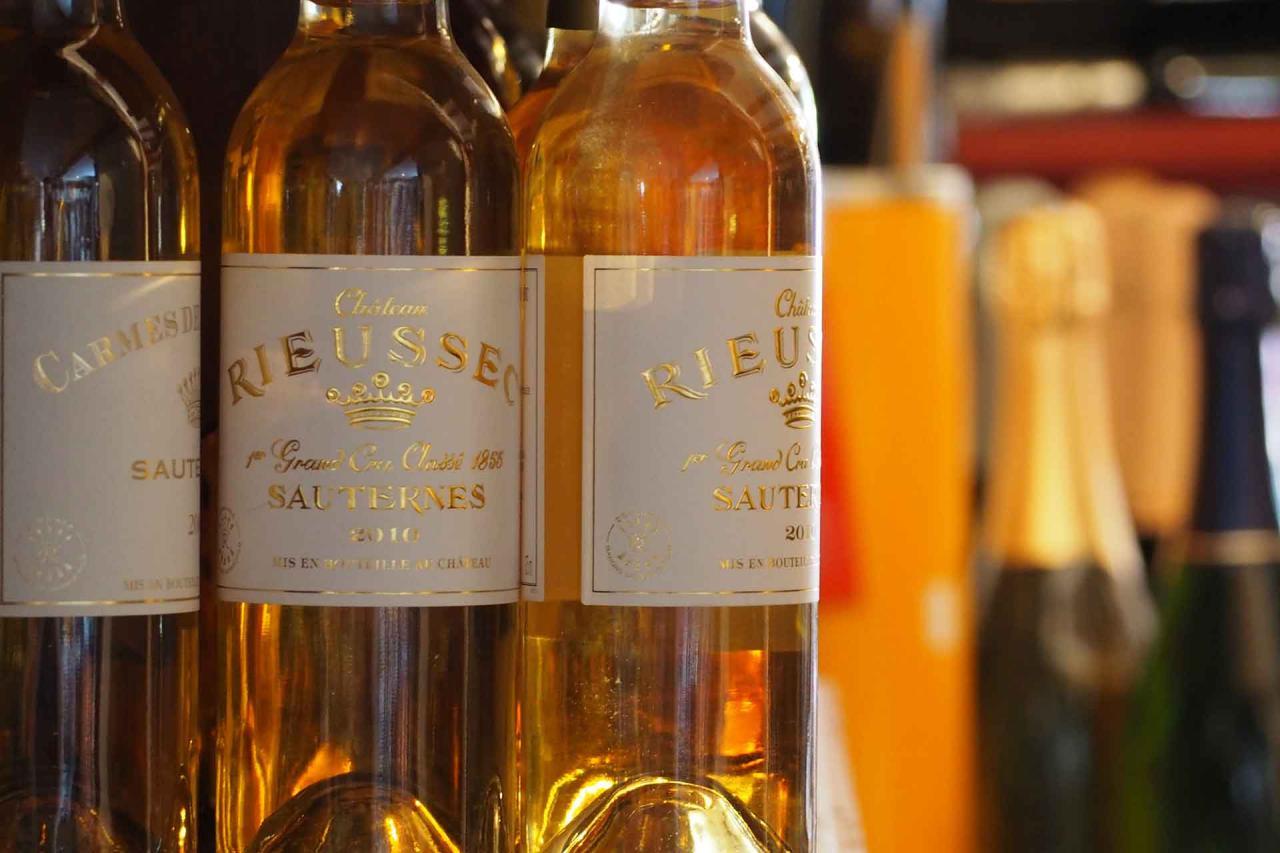There are dozens of sweet white wine types that are worth trying at least once.
As Benjamin Franklin said, “Wine is constant proof that God loves us and loves to see us happy.” We’re reasonably sure he was talking about sweet wine!
Let’s explore the most popular types of sweet white wine and what makes each special. Let’s also explore fruity wines and full-blown dessert wines — the sweetest wines in the world.
Sweet White Wine Types
Although dry white wine dominates the market in terms of volume, there will always be a place for sweet white wine types. In this article, we will cover sweet and very sweet wine. Still, these two broad categories are more complex than you think — sweet wine is deliciously varied!
Get updates on the latest posts and more from Wine Bugle straight to your inbox.
Sweet White Wine Varieties
Sweetness is relative to the amount of sugar and acid in the wine. Like a lemonade doesn’t taste all that sweet thanks to the tart lemon juice, wine’s acidity balances sugar, resulting in wines with all sweetness levels. For sweet wines, we can safely say any wine with between 30 and 120 grams of residual sugar per liter (RS/L) is considered sweet.) Some styles have over 400 grams or RS/L! In comparison, dry white wine rarely has more than 3 to 5 grams of RS/L. Here are the most popular sweet white wine types.
Late Harvest White Wines
Late-harvest wines are made with grapes left to hang on the vine for between one and two months after the regular harvest time. The grapes over-ripen and dry, losing moisture and gaining sugar concentration.
Once the grapes are picked, the producer makes wine with them regularly. And here’s something interesting: the winemaker usually leaves residual sugar in the fermented wine, resulting in sweet wine, but that’s not always the case. Late-harvest wine can be relatively dry! Late-harvest wines often have around 30 grams of residual sugar per liter (RS/L). Expect over-ripe fruit aromas along with hints of dried fruit.
Wine to try: Dolce Late Harvest Wine, Napa Valley, USA
Sauternes and Barsac
Sauternes and Barsac are two neighboring French appellations in the Left Bank Bordeaux. Here, the climatic conditions are suitable for developing the noble rot: botrytis cinerea. The fungus infects grapes and dries them, leaving the fruit’s sugar and acid behind. Fermenting botrytis-infected grapes results in luscious wine.
Semillon, Sauvignon Blanc and Muscadelle are the grapes used in these communes, and the wines made with them contain between 80 and 120 grams of RS/L. Expect a sweet palate and aromas of apricot, honey, caramel and honeysuckle.
Wines to try:
Chateau Rieussec, Sauternes, France
Chateau Climens, Sauternes - Barsac, France
Auslese Riesling
Auslese is a German term for “selected harvest” wines, most of which are made with late-harvested, sweet-scented Riesling. The grapes are handpicked, and a few might be affected by the noble rot.
Not all Auslese Riesling is sweet. As explained in the late harvest section above, producers might choose to ferment the sweet juice from late-harvested grapes to dryness, resulting in richer and more alcoholic wines that are not necessarily sweet.
Before fermentation, Auslese grapes have a stunning sugar concentration of 191–260 grams of sugar per liter, but after fermentation, the category ends with around 30-50 grams of RS/L.
Wine to try: Joh. Jos. Prum Wehlener Sonnenuhr Riesling Auslese, Mosel, Germany

Tokaji Aszú (Tokay)
Tokaji is a region and a wine style in Hungary, and it is known for its wines made with botrytized grapes. Here, winemakers combine infected grapes with fresh wine to produce sweet, balanced wines called Aszú. The standard is adding five 25kg baskets (5 puttonyos) of botrytized grapes for every 136-liter barrel in a near 1:1 ratio.
The grapes used for Tokaji include Furmint, Harslevelu and Sárga Muskotály. Expect scents of dried fruit, pitted fruit, honey, saffron, flowers and toasted nuts. Tokaji Azsú must contain at least 120 grams of RS/L.
Pro tip: There are sweeter kinds of sweet white wine in Tokaji, including Tokaji 6 puttonyos, and Tokaji Essencia, made with free-run juice with up to 450 grams of RS/L!
Wines to try:
Royal Tokaji Aszu 5 Puttonyos, Tokaj, Hungary
Oremus Tokaji Aszu 5 Puttonyos, Tokaj, Hungary
White Port
White Port is produced in the Douro Valley, Portugal, and comes from the same place as regular Port. This style, though, is made with white grapes, mainly Malvasia Fina, Rabigato and Codega. The grapes are picked and fermented, but the producer stops fermentation by adding a neutral grape spirit. The result is half-fermented wine with plenty of residual sugar and an alcoholic kick.
White Port tastes like stone fruit, citrus, brown spices, dried fruit and nuts. Depending on the producer, it can contain between 50 and 150 grams of RS/L.
Wines to try:
Kopke Colheita White Port, Portugal
Ferreira Port Branco, Portugal
Very Sweet White Wine Varieties
Although there’s no universal definition for very sweet wines, we generally consider any wine with over 120 grams of residual sugar per liter a very sweet or dessert wine. These are the most popular.
Moscato
Moscato is an ancient grape native to the Mediterranean Basin; it is one of the few white varieties that thrive in the warmer coastal regions, producing considerable amounts of sugar in the process.
When fermented, winemakers choose between fermenting the grape juice to dryness or leaving some of its natural sugar behind, resulting in a wide variety of sweet wines. Muscat can produce sweet, semi-sweet and luscious types of sweet white wine. The sweetest kind is the French fortified Muscat or Vin Doux Naturel.
French appellations for the style include Muscat de Saint-Jean de Minervois, Muscat de Beaume de Venise, Muscat de Mireval and Muscat du Cap Corse. These wines are bold, alcoholic, and have at least 110 grams or RS/L.
Wines to Try:
Chateau d’Exindre Muscat de Mireval Vent d’Anges, Languedoc-Roussillon, France
Domaine Cazes Muscat de Rivesaltes, Languedoc-Roussillon, France

Passito wines
Passito wines are a unique type of sweet wine. They are made with late-harvested grapes that are dried even further in specialized rooms. The fruit can lose up to sixty percent of its moisture, resulting in shriveled fruit that produces sweet grape juice. Fermenting such sweet grapes can take months or even years, but the result is a sweet wine with over 100 grams of RS/L.
Although most passito wines are red, there are several white wine styles worldwide. The German and Austrian Strohwein, the French Vin de Paille, and the Italian Recioto di Soave and Tuscan Vin Santo are good examples. Each is made with the respective local varietals.
Passito wines have a honeyed richness and scents reminiscent of raisins, sultanas and other dried fruit. You’ll also find nutty aromas in the wine, proper of wines affected by oxidation.
Wines to Try:
Donnafugata Ben Rye Passito di Pantelleria, Sicily, Italy
Giuseppe Quintarelli ‘Amabile del Cere’ Passito Bianco Veneto IGT, Italy

Vin Santo
There are many wines under the name Vin Santo or Holy Wine. Italy has its own vin santo, but so does Greece. All vin santo wines have something in common. They’re often made with late-harvested grapes and are sometimes fortified, and although dry vin santo exists, most examples are either sweet or semi-sweet.
Tuscan Vin Santo (Vin Santo del Chianti Classico DOC, for example), made from Malvasia and Trebbiano, is perhaps the most common wine in the category. In terms of sweetness, the sweetest vin santo wines contain between 80 and 120 grams of RS/L. Expect honeyed white fruit, floral aromatics, spices and toasted nuts on the nose and palate.
Wines to Try:
Barone Ricasoli Castello di Brolio Vin Santo del Chianti Classico, Tuscany, Italy
Marchesi Antinori Vin Santo del Chianti Classico, Tuscany, Italy
Eiswein (Ice Wine)
Ice wine is a unique sweet wine only possible in the world’s coldest vineyards, including those in Germany and Canada. To make this wine style, producers allow the fruit to hang on the vine until winter and pick the grapes frozen solid after the first frost. By pressing the frozen grapes, winemakers can separate the ice shards from the sweet juice, resulting in overly sweet wines.
The grapes used for ice wine usually withstand the cold, most commonly Riesling and Vidal (an American hybrid.) Since ice wine is not made with botrytized or dried grapes, it offers fruit purity and irresistible natural sweetness.
Wines to try:
Pillitteri Estates Winery Vidal Icewine, Niagara-on-the-Lake, Canada
Weingut Donnhoff Oberhauser Brucke Riesling Eiswein, Nahe, Germany
Pedro Ximenez Sherry
Pedro Ximenez is a white grape native to Andalucía, Spain, and it’s the source of the sweetest type of white wine: Pedro Ximenez Sherry.
Also known as PX, this type of wine relies on producers to harvest and sun-dry the already sweet grapes achieving extraordinary sugar concentration. The wines then spend months or years in a solera system, where the wines darken and gain flavors of figs, chocolate and dried fruit. Expect between 200 and 400 grams of RS/L.
Wine to Try: Bodegas Toro Albala Don PX, Montilla-Moriles, Spain
Sweet Fruity White Wine Types
Before we wrap our guide to types of white sweet wine, some wines deserve a memorable mention. Sweet, fruity white wine types exist worldwide, and although not as famous as the ones described above, their sweet scent is alluring.
Torrontés, from Argentina
Pinot Gris, from Alsace
Gewürztraminer, from Alsace and Northern Italy
Chardonnay, from New World (warm) countries
Viognier, from Southern France and the Rhône Valley
Difference Between Sweet and Fruity
Now that we’ve talked about the most famous sweet and very sweet white wines worldwide, there’s something we must get out of the way, and that’s the difference between sweet and fruity wines. By definition, sweet and very sweet wines have residual sugar, enough of it to make the wines taste sweet.
On the other hand, we have fruity wines. White wines that smell sweet but are dry on the palate; in other words, they don’t have noticeable sugar. The thing is, since all wines, dry and sweet, are made with very ripe grapes, the sweet scent of the fruit can be perceived in the wine, even if its sugar is fermented to dryness.
Chardonnay, for example, is often sweet-scented but dry. The same happens with the above-mentioned Riesling, Gewürztraminer, Viognier and the Argentine Torrontés. These wines smell sweet and fruity for sure but don’t be surprised if they are bone dry.
Conclusion
Now that you know about the finest sweet and very sweet wines out there, what is your favorite? There are many sweet white wine types, and you’ll surely like some more than the rest. No wine is better than others, they’re different expressions of the land, and the grapes used to make them, but that’s what’s most exciting about learning about wine, the endless diversity!
Photos by Dominic Lockyer, Lou Stejskal

